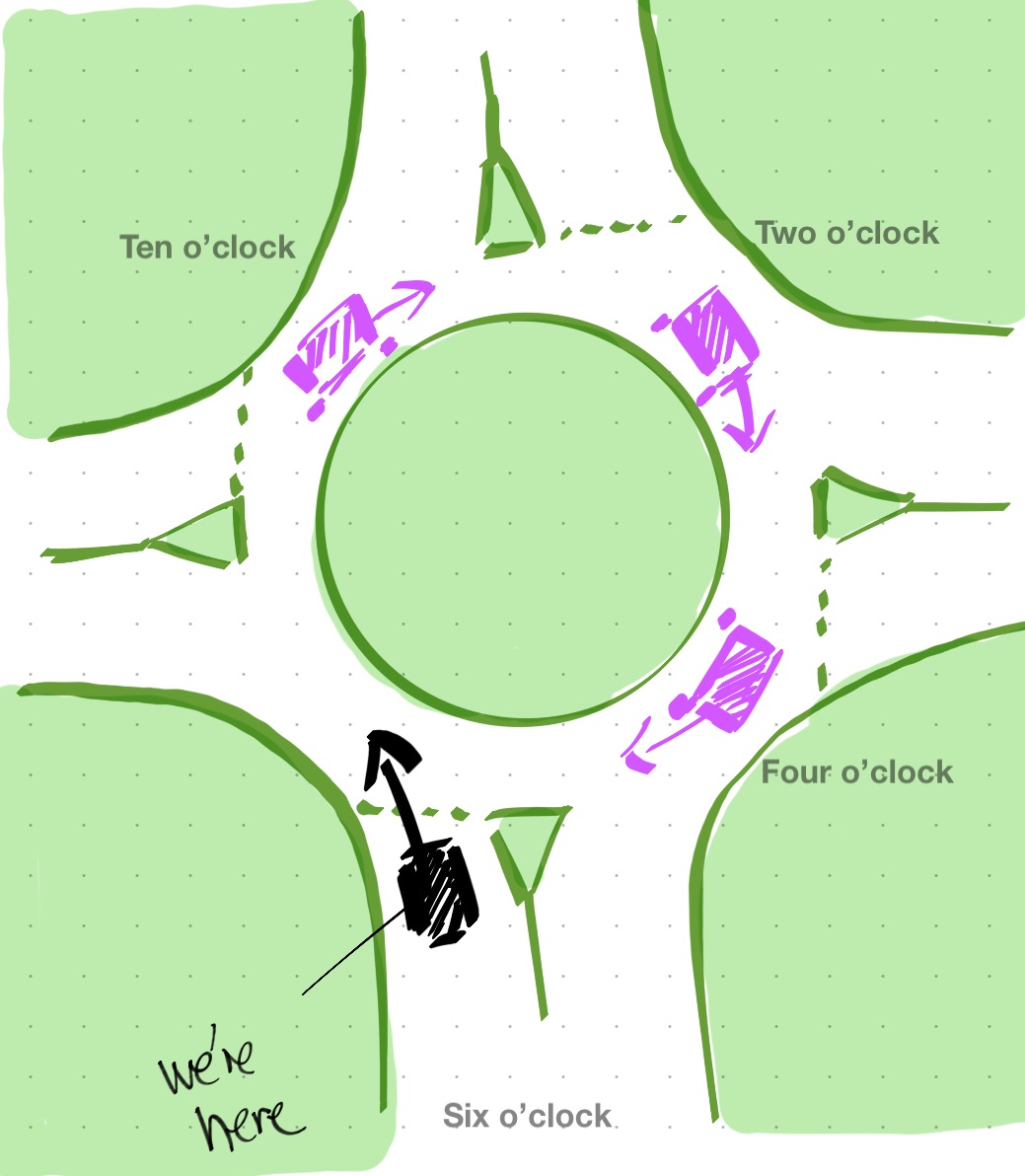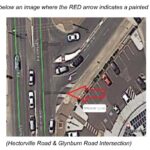Navigating single-lane roundabouts can be challenging, especially for learner drivers and overseas visitors. This guide covers Australian road rules and practical scenarios, providing insights to help you approach roundabouts safely and confidently, with a focus on requirements for the Vehicle On Road Test (VORT) in Adelaide.
Australian Road Rules for Single-Lane Roundabouts
1. Give Way to Vehicles in the Roundabout: According to Australian Road Rule 114, when approaching a roundabout, you must give way to all vehicles already in the roundabout, particularly those coming from your right.
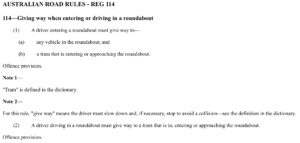
2. Signaling Requirements:
• Turning Left: Signal left as you approach and enter the roundabout.
• Going Straight: No signal is needed upon entry, but indicate left as you exit.
• Turning Right: Signal right upon entry, then switch to a left signal as you exit.
3. Exiting the Roundabout: Australian Road Rule 118 states that, if practicable, you must signal left when leaving the roundabout.
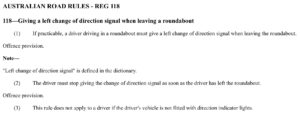
4. Speed Control: The appropriate turning speed within a roundabout depends on your control confidence, typically ranging from 12-15 km/h for new drivers to around 22-25 km/h for more experienced ones. Slow down to assess traffic and enter smoothly.
Practical Scenario: Approaching from the 6 o’clock Position
Scenario: You’re approaching a single-lane roundabout from the 6 o’clock position. Vehicles are present at the 10 o’clock, 2 o’clock, and 4 o’clock positions within the roundabout.
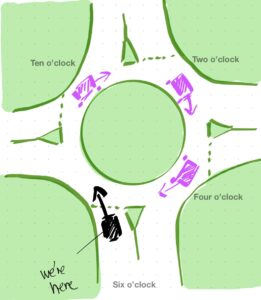
Application of Australian Road Rules:
• Give Way: As you approach, remember that you must give way to vehicles in the roundabout, especially those to your right, which is critical for avoiding potential conflicts.
Practical Steps:
• 10 o’clock Vehicle: This vehicle is ahead of you and to your left, moving away from your entry point. Since it’s not approaching from your right and won’t be impacted by your entry, you can proceed without affecting its path.
• 2 o’clock and 4 o’clock Vehicles: These vehicles are approaching from your right. You must give way to them, as entering the roundabout while they are near would force them to adjust their speed or direction, which would be considered a failure to give way.
Key Point: Giving way means allowing vehicles in the roundabout to continue without altering their speed or direction due to your entry.
Additional Tips for Safe Roundabout Navigation
1. Observation: Approach the roundabout slowly, about 30-50 meters beforehand. Use this distance to assess the speed and position of other vehicles in the roundabout.
2. Decision-Making: If you’re unsure whether you can enter safely, it’s safer to wait until there’s no conflicting traffic. This approach avoids hesitation and ensures smooth entry when it’s clear.
3. Signal Properly: Use your indicators correctly to communicate your intentions to other drivers, minimizing misunderstandings and maintaining smooth traffic flow.
4. Exit Confidently: As you exit, maintain a steady speed to avoid confusing drivers behind you.
Common Mistakes to Avoid
• Failing to Signal on Exiting: Always signal left when exiting to inform other drivers.
• Not Giving Way: Entering without yielding to vehicles already in the roundabout is a common error. Always prioritize those on your right.
• Hesitation or Rushing: Maintain a steady approach; hesitation or rushing can disrupt traffic flow and increase risk.
VORT and Adelaide Driving Schools
In South Australia, obtaining a driver’s license includes passing the Vehicle On Road Test (VORT), which assesses your adherence to road rules and safe navigation of situations like roundabouts. We offer training to prepare for the VORT, focusing on practical skills and roundabout navigation.
Understanding and practicing these guidelines will enhance your confidence and safety when approaching roundabouts in Australia, whether preparing for the VORT or driving independently.
